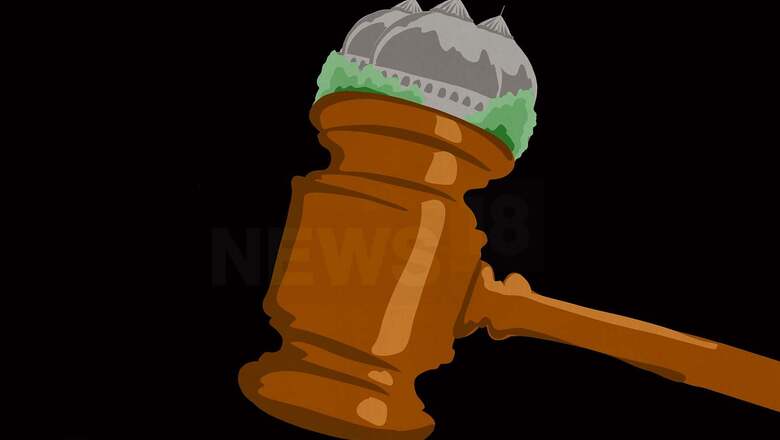
views
New Delhi: Urging the Supreme Court not to rewrite history, the Muslim parties in the Ayodhya case on Monday said the Constitution Bench should not go into legitimacy of ruler's action as it has never treaded this path in the past.
“Don't go into legitimacy of ruler's action. It is not for Your Lordships to rewrite history, (it) will open a Pandora’s Box. What law will you apply to Babur? If Babur gets involved, Ashoka's action will also be judged,” senior advocate Rajeev Dhavan, appearing for the Muslim parties, told the five-judge bench led by Chief Justice Ranjan Gogoi.
Dhavan said the onus is on the Hindu side to prove their claim that a Ram Mandir stood at the disputed site since the title of the Muslim side has been incontrovertible since 1885.
Arguing that there is nothing that makes Babri Masjid ‘un-Islamic’, the senior lawyer said a mosque will always remain a mosque and even demolition won't take away the character of the mosque. “The demolished structure at Ayodhya is still a mosque,” he said.
The submission was made in response to some questions posed by the Supreme Court last month over some images of lions, birds and flowers at the now demolished structure. “Islamic law has evolved over 15 centuries, cannot pick and choose from Quran and Hadith to say "you are acting against Quran", Dhavan said.
He asked whether the apex court would allow the digging of over 500 mosques, where there are claims that they have been built over some temples, and questioned if a mosque can be invalidated 450 years later if some remains of another religious structure is found.
The lawyer, earlier in the day, had also alleged that questions are asked only from Muslim parties and not posed to the Hindu side in the politically sensitive land dispute case. "Your Lordship didn't ask question to the other side. All the questions have been asked to us only. Of course, we are answering them." Dhavan told the bench on the 38th day of the crucial hearing in the case.
The submission was vehemently opposed by senior advocate C S Vaidyanathan, representing deity 'Ram Lalla', who said: "This is totally unwarranted". Dhavan's remark came when the bench, which also comprises justices S A Bobde, D Y Chandrachud, Ashok Bhushan and S A Nazeer, said that the idea behind erecting iron railing at the disputed site was to separate the inner courtyard from the outer courtyard.
By putting up an iron railing, the idea was to separate Hindus and Muslims and it was to appreciate the fact that Hindus were offering prayers in the outer-courtyard where 'Ram Chabutra', 'Sita Rasoi', 'Bhandar Grih' were situated, the court said.
The bench also took note of Dhavan's submissions that the Hindus only had "prescriptive right" to enter and offer prayer at the site and it does not mean that they had ownership claim over the disputed property.
As you say they had the right to pray and enter, does it not dilute your right to ownership, the bench asked, adding in case of "exclusive ownership" over a property, can a third person be allowed entry and prayer right.
The protracted hearing in the case has entered the crucial final leg on Monday as the top court resumed proceedings on the 38th day after the week-long Dussehra break.
Fourteen appeals have been filed in the apex court against the 2010 Allahabad High Court judgment, delivered in four civil suits, that the 2.77-acre land in Ayodhya be partitioned equally among the three parties — the Sunni Waqf Board, the Nirmohi Akhara and Ram Lalla.


















Comments
0 comment